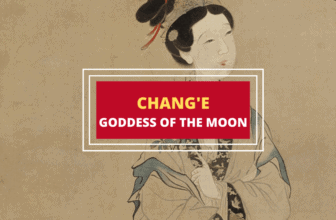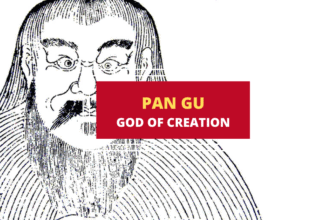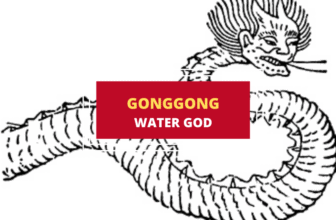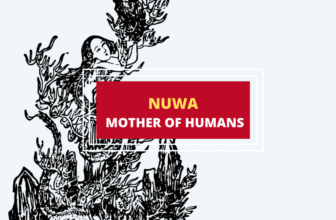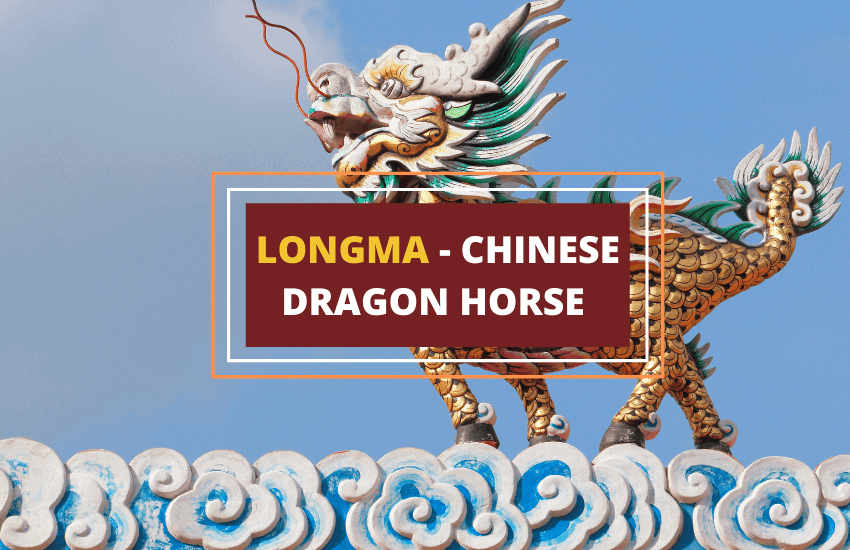
Table of Contents
In Chinese mythology, Longma is a legendary creature with the head of a dragon and a horse’s body covered with dragon scales.
It was believed that seeing Longma was a good omen and embodiment of an admirable mythological ruler of ancient China. The dragon-horse was associated with one of the Three Sovereigns and Five Emperors, the group of deities and mythical sage-rulers of prehistoric China.
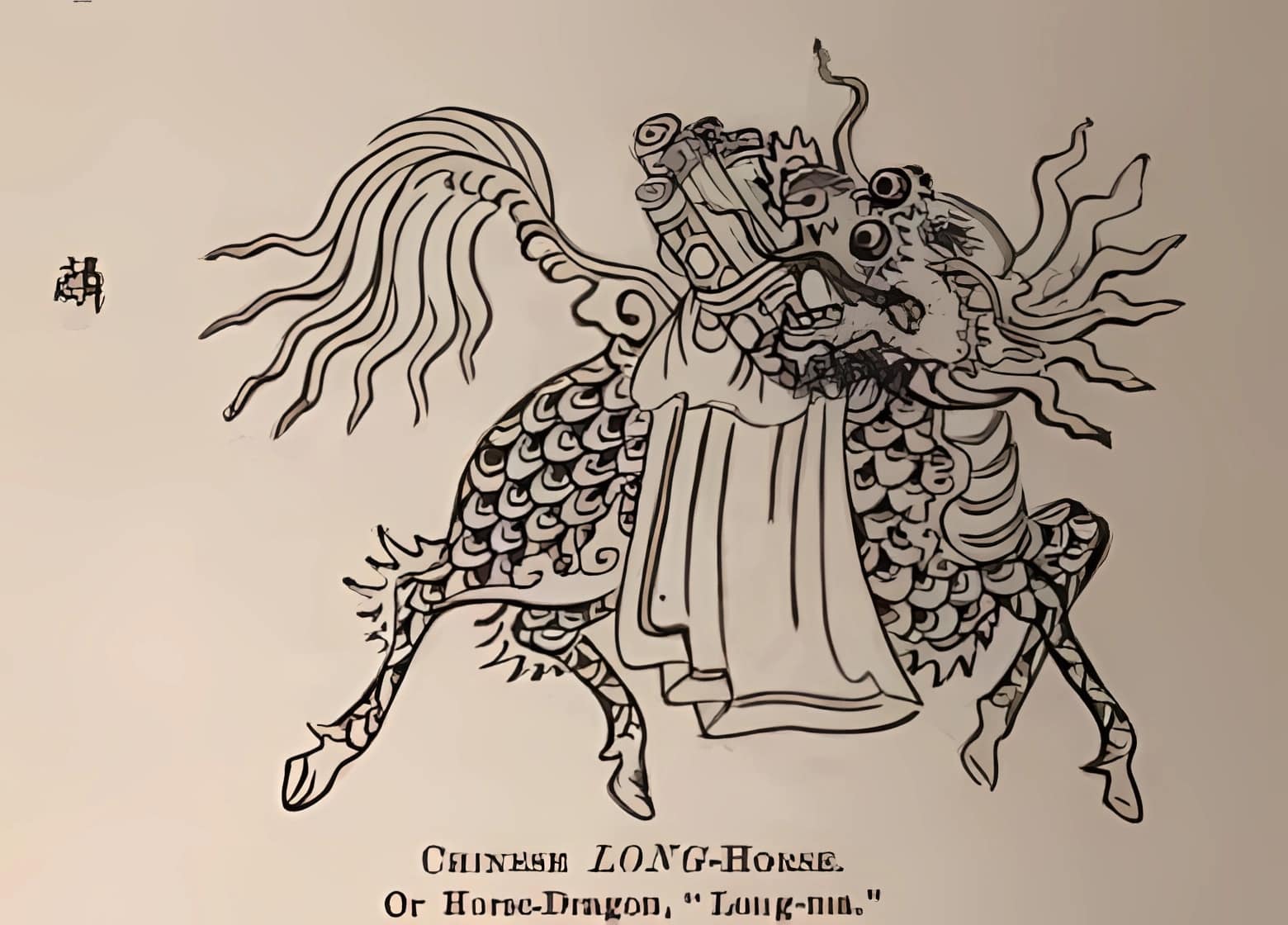
Longma in Chinese Mythology
The word longma stems from the two Chinese words, long meaning dragon and ma, which can be translated as a horse. Furthermore, longma is sometimes referred to as an eminent person, and the word also appears in the Chinese idiom longma jingshen, meaning the vigorous spirit in old age.
1- Early Mentions of Longma
The dragon-horse appears in many Chinese classic texts, but his most prominent appearance is in the myth of Hetu and Luoshu. In ancient China, Hetu, the Yellow River Chart, and Luoshu, the River Luo Writings or Inscription, were cosmological diagrams used to describe the correlation between the hexagrams of the Book of Changes, the so-called Yijing, and the universe and the life on Earth. These are also used in Feng Shui.
These diagrams are first noted in the Book of Documents, called Shangshu. The Book of Documents or the Documents of Antiquity belongs to one of the ancient five classics. These old Chinese classics are collections of lectures and sermons of important ministers and rulers from mythical times. According to these books, Hetu was a jade stone that had eight trigrams inscribed.
2- The Longma Appears to Emperors
According to the scholar Kong Anguo from the Han period, the legendary dragon-horse, called Longma, emerged from the Yellow River with the pattern of these eight trigrams on its back. The mythological emperor Fu Xi named the pattern on the horse’s back River Chart or Diagram.
The dragon-horse continued to appear during the rules of the virtuous emperors, such as Shun, Yao, and Yu regularly and was considered to be a favorable omen and a sign of good fortune. The miraculous horse, often referred to as the unicorn, didn’t appear during the lifetime and reign of Confucius, which was interpreted as the prophecy of inauspicious times.
Similar to Longma, the dragon turtle, called Longgui, emerged from the River Luo, carrying the sacred inscription on his back. Just like the dragon horse, the turtle also appeared only during the reigns of the virtuous rulers and was never seen when selfish men governed the land.
3- Interpreting the Inscriptions
The sage rulers interpreted the two inscriptions, the Yellow River Chart and the Inscription of the River Luo and used them to model their rule according to the evidence they found in the diagrams. Some believe that Fu Xi invented these patterns and arranged the diagrams according to the star constellations he observed.
The Similarities with Other Mythological Creatures
In Chinese folklore, the dragon-horse, or Longma, is commonly connected to the other mythological creatures, such as:
1. Qilin
The so-called Qilin, or in Japanese, Kirin, is a popular dragon-horse-like mythical creature in East Asian Cultures.
Just like the dragon-horse, Qilin consists of different animals. The most common depiction of this mythological being is composed of the body of a deer, ox, or a horse, and the head of the Chinese dragon. His body is covered with fish scales and is surrounded by fire. He’s often referred to as the Chinese unicorn since he was depicted as having a single horn.
Similar to Longma, Qilin was considered a benevolent beast. His appearance was thought to be an auspicious omen and the sign of good luck. It was also believed that he could only be seen during the reign of rulers who were good, kind, and generous, and would appear just prior to the death or birth of a sage.
2. Tianma
In Chinese folklore, Tianma is known as a winged horse with the ability to fly. He’s often referred to as the heavenly horse. He’s most commonly depicted as a fabled creature with dragon-like features and was associated with different stellar phenomena. Historically, these celestial flying dragon-horses were celebrated for their prowess and size and often linked to Han Wudi, an emperor of the Han dynasty.
3. Yulong
The famous white dragon-horse is one of the three sons of the Dragon King and a protagonist of the novel Journey to the West. The monk Xuanzang was riding him during his mission to retrieve the scriptures from the West. In the novel, the white dragon-horse was a metaphor and a symbol of mindful and vigilant willpower and mental strength.
4. Chimera
In Greek mythology, Chimera was a female beast who breathed fire. Chimera is similar to Longma, as it’s composed of different animals: a lion’s head, a goat’s body, and a dragon’s back and tale. Although similar in appearance, Chimera is nothing like the dragon-horse. She’s considered a malevolent creature who devastated Lycia and Caria and was ultimately destroyed by Ballerophon.
5. Pegasus
According to Greek mythology, Pegasus was a divine winged horse. As one of the most prominent mythological creatures, Pegasus, much like the dragon-horse, is often depicted as being extremely powerful and benevolent.
The Symbolism of Longma
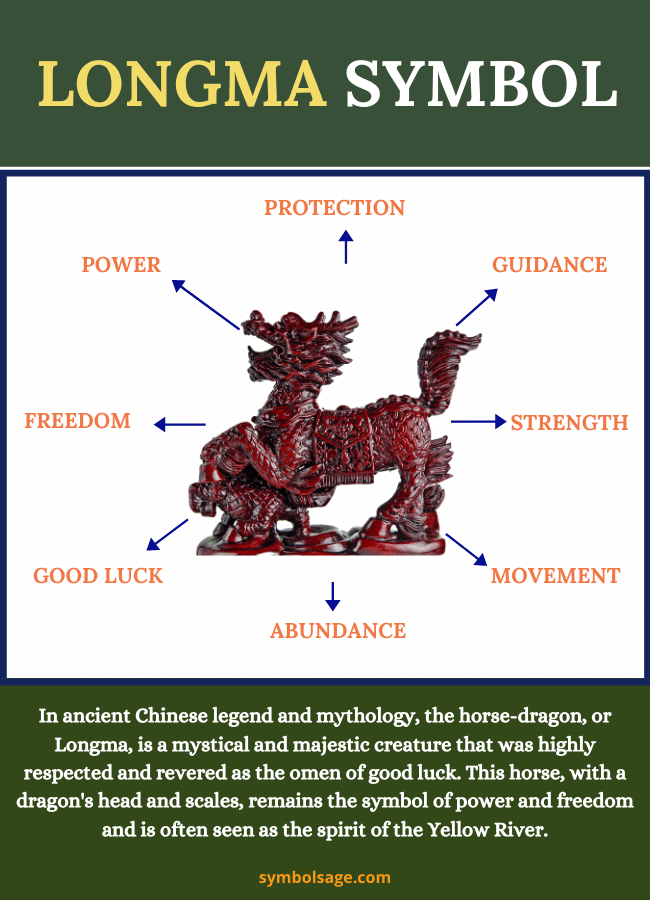
Longma unites and interlinks prevailing Chinese beliefs about horses and dragons.
Symbolism of the Horse in Chinese Culture
In Chinese culture, horses are regarded as the most important animals and served as an inspiration for many poems, paintings, songs, and sculptures. These majestic animals are a universal symbol of freedom, as riding a horse is seen as an act of freeing oneself from their own restrains and bindings. Horses also represent movement, travel, and power.
In Chinese astrology, the horse is the seventh Zodiac sign, symbolizing independence, strength, and beauty. It’s considered that people born in the year of the horse are cheerful, enthusiastic, extremely active, and high-spirited.
Symbolism of the Dragon in Chinese Culture
Similar to horses, dragons are also seen as symbols ofauspicious and potent power in East Asian traditions. They represent strength, power, and health, and are often seen as omens of good luck. In feudal society, they were often associated with emperors, symbolizing their sovereign rule and authority.
Therefore, we can conclude that Longma, the dragon-horse, interconnects these interpretations and symbolizes the vigorous spirit, strength, and freedom of Chinese people. In Feng Shui, Longma is seen as a symbol of protection, power, abundance, and good luck, especially in a career.
To Sum Up
In ancient Chinese legend and mythology, the horse-dragon, or Longma, is a mystical and majestic creature that was highly respected and revered as the omen of good luck. This horse, with a dragon’s head and scales, remains the symbol of power and freedom and is often seen as the spirit of the Yellow River.




